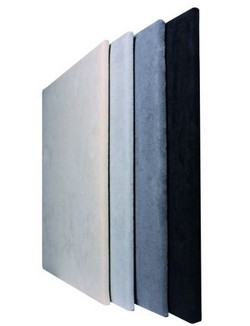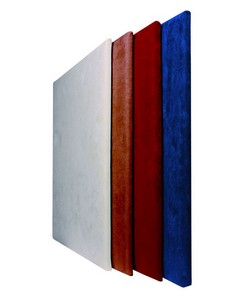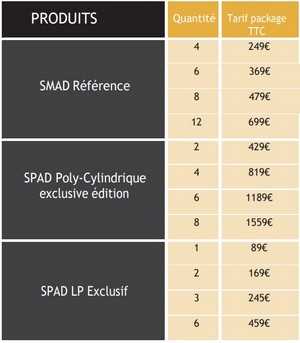PYT Audio Acoustic Panels
![PYT Panels [Picture of PYT Panels]](../jpg/pyt_panels_system.jpg)
[ Home | Staff & Contacts | HiFi Playground | Listening tests | DIY & Tweakings | Music & Books ]
Product name: PYT Audio Acoustic Panels
Manufacturer: PYT Audio - France
Cost: See text - depends on how many you need! (Currency conversion) - (YMMV)
Reviewer: Graeme Budd - TNT France
Reviewed: June, 2022
We've covered room acoustics before on TNT-Audio with a series from my colleague Mark. In it he points out that just applying an off the shelf solution without knowing the room in question can be a waste of time and energy and (this is my interpretation of his words) as fraught with potential insatisfaction as buying a new car from a Peugeot dealer.
I'm inclined to agree that broad band application of acoustic treatment without understanding the whys and wherefores is potentially beneficial to your listening experience but could easily backfire leaving you scratching your head wondering if the outlay was worth it. But PYT Audio offered to supply me some panels to test and my inquisitive side got the better of me and so I though why not?
In actual fact the process was easy as PYT Audio took the time to get the drawings and some photos of my room in order to take the room size, the materials of the surfaces, the furniture and the position of the hifi into account and come up with a battle plan.
The supplied equipment, whilst in part globally standard (the speaker wall diffusion for example is part of one of their standard packs), was specced to my particular room with instructions supplied as to where to place the various panels.
So without further ado here's a list and some pictures of the panels they supplied:
![Poly_Cylindrical [Picture of Poly Diffuser]](../jpg/poly_spad.jpg)
3 SPAD Poly Cylindrical Diffusers

6 SMAD Panels

18 SPAD LP Absorber panels
Price wise there are a variety of packs available and there are some volume discounts. As a picture is worth thousand words here's the EU price list (including VAT).

All the panels are finished in a suede type material and available in a
multitude of colours so you can coordinate with your decor, and can be
fixed to the wall either with self-adhesive Velcro or pins. As I knew the
panels were only a temporary fixture and not destined to be permanently in
my listening room I opted for the Velcro solution. Bad idea - the adhesive
takes the paint off the walls when you try and remove the Velcro. So I now
have a lovely pattern of Velcro squares on my walls...
I guess this is better than some of the pro audio acoustic treatment where you're supposed
to glue them to the walls but I'm going to have to either a) buy some
panels or pictures to hide the squares or b) repaint my 2 year old
listening room.
All the panels are the same square size so once you've got the fixings in place you can change them around to your heart's content.
As the speakers are the items concerned with acoustic treatment I'll just list the two models I used during my time with the PYT panels. The AN-J Spes from Audio Note UK and the IBX-RW3s from Living Voice. The rest of the system was the habitual ever changing list of products..
PYT suggested the SMADs and Poly cylindrical (so diffusion then) in between the speakers (see image above) and the SPAD absorber panels at various points on the walls taking into account the positions of windows, curtains, furniture and the electric guitars I have on my left wall. So broadly speaking that's where I put them.
Methodology wise I started off with the diffusers behind the speakers and then added the absorbers in the room. Finally, I removed some of the room absorption and swapped it for the smaller diffusers behind the speakers. And here's what happened:
Being an impatient sort of chap, I installed the diffusers on the wall behind the speakers with the Audio Note AN-Js still in place. For those of you who missed the recent review it's here. For those who know the design it works in corners and close to the back wall so I wasn't expecting a whole bunch of difference especially as I'd given PYT the Living Voices as my usual speakers and they'd designed the package around them and their preferred free space positioning.
So, imagine my surprise when suddenly everything took a sharp step upwards in terms of clarity. I'm not saying that a load of new parts appeared, or any veils were lifted but what was most impressive was the system's new found ability to communicate at much lower listening levels. This has to be considered doubleplus good for anyone who lives in a semidetached house or who has children that need to go to bed at reasonable times. It also can't be bad for the long term effects on my hearing!
As I mentioned above, the set of panels I'd received had been
selected around the habitual installation of my Living Voice speakers
which are 1 metre from the rear walls so I thought it would be useful to
try the prescribed configuration.
Again, the results were similar. Improved clarity and the impression of
being in a calmer space allowing lower volumes but without reduced
dynamics. Stereo imaging had a more 3D effect with better depth.
Next, I added the remaining panels to the sidewalls as prescribed. Here
the difference was less obvious than effect of the panels behind the
speakers from a sound point of view but did further improve the calm
nature of the room with no obvious downsides.
On the subject of calm, having the panels made me realise how “live” a lot of modern rooms really sound and that a bit of damping all round wouldn't be a bad thing. This goes for having a conversation as much as listening to music. It's also valid for TV watching and working from home where Teams and Zoom have very much become part of our daily lives. This all goes to confirm what Mark said in his article and I quote “A room that is comfortable to sit in and hold an easily intelligible conversation is more likely to make a good audio room”.
As I mentioned earlier the flat absorbers and flat diffusers are the same size so swapping them is very straight forward. Both options are better than with the untreated room but the jury is still out as to which is better. The absorbers fix the instruments in space but remove the "air" around each. The diffusers are more 3D in nature. Apparently, the choice can come down to the type of music you listen to with the diffusers being preferred by classical music fans and absorbers by those of a popular music persuasion. Jazz fans will have to suck it and see I'm afraid but I can see piano trio jazz being superb with the diffusers to give a real sense of being there. Partners of Celine Dion fans would be advised to put absorbing panels on all surfaces to prevent any sound getting out of the listening room...
There's no getting away from the fact that these panels aren't given away and you can probably get an equivalent effect with a more studio/pro audio type solution that may well cost you less. Where the PYT gear hits back is the overall quality of finish and ease of installation. They don't make the room look like it should have a mixing desk and a pair of Yamaha NS 10Ms at one end and manage to stay on the right side of the decoration vs function equation. And to be honest when you see what some people spend on cables - well these are a bargain in comparison to that!
If you're looking to improve your listening space the service offered by PYT is both excellent (they're really good to talk to) and effective. It will work with any system and will stay with you a long time - at least until you move house and a new challenge appears. I'm not sure we can say that about a lot of upgrades so if you've got the cash then they are definitely worth looking at especially if you can get away with just the front wall panels. Also you can borrow a set of panels to try them for a very reasonable loan fee so trying before buying is definitely recommended!
Obviously, the outlay will be highly room and decoration dependent so never more so than in this case your mileage may vary.
DISCLAIMER. TNT-Audio is a 100% independent magazine that neither accepts advertising from companies nor requires readers to register or pay for subscriptions. After publication of reviews, the authors do not retain samples other than on long-term loan for further evaluation or comparison with later-received gear. Hence, all contents are written free of any “editorial” or “advertising” influence, and all reviews in this publication, positive or negative, reflect the independent opinions of their respective authors. TNT-Audio will publish all manufacturer responses, subject to the reviewer”s right to reply in turn.
© Copyright 2022 Graeme Budd - graeme@tnt-audio.com - www.tnt-audio.com
[ Home | Staff & Contacts | HiFi Playground | Listening tests | DIY & Tweakings | Music & Books ]